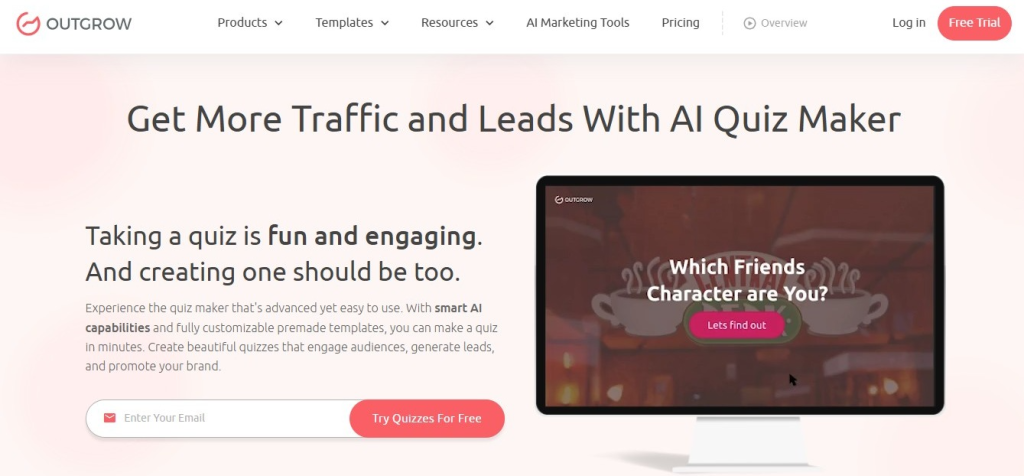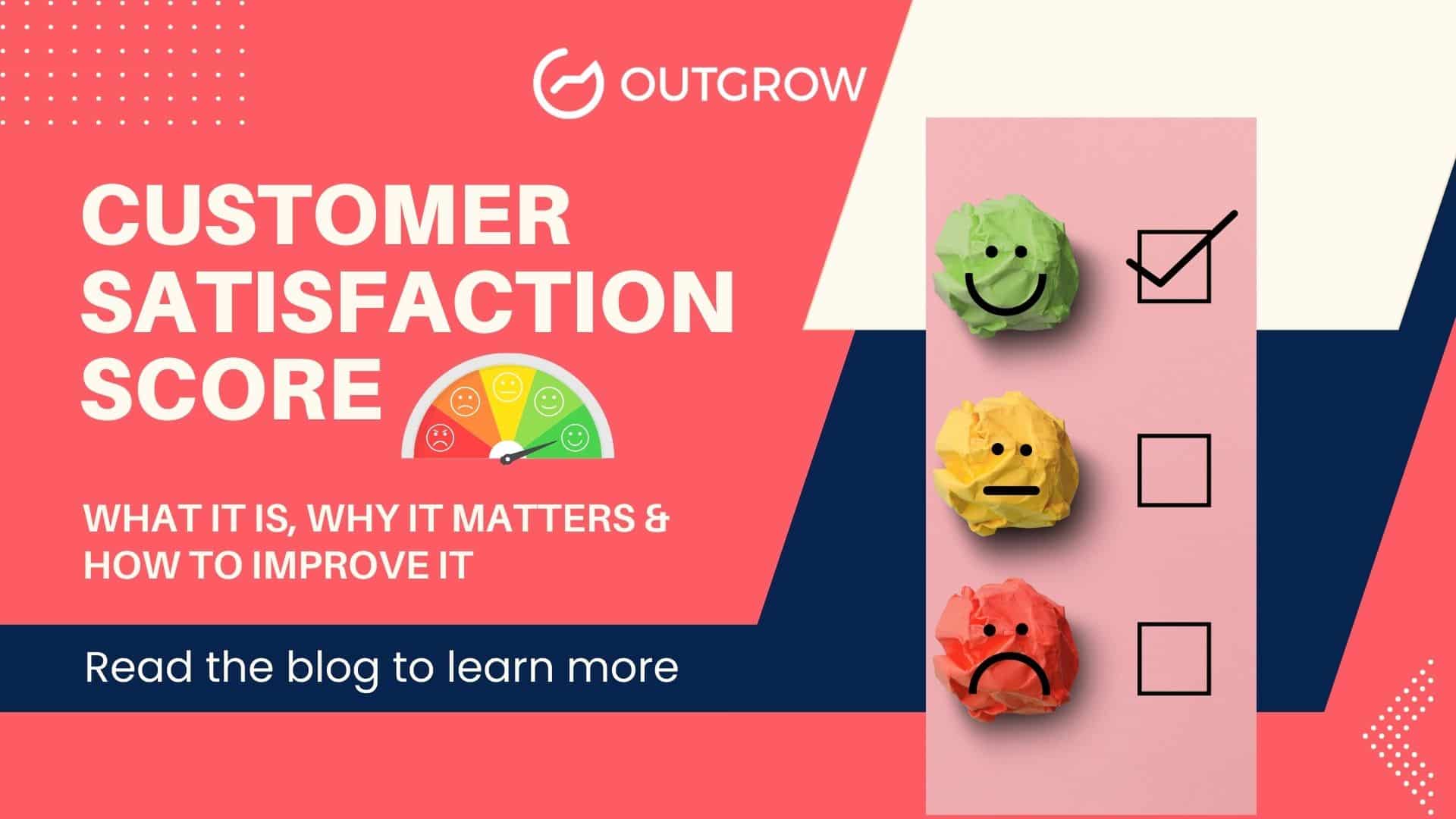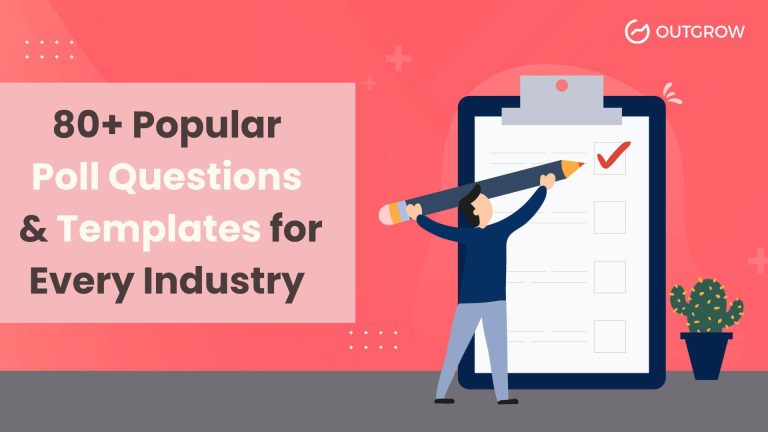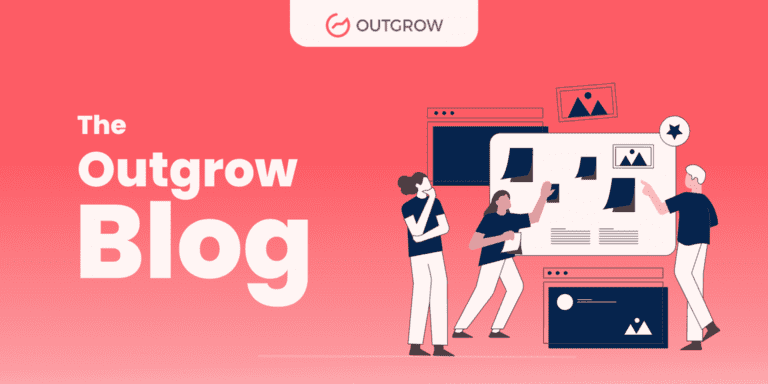Customer Satisfaction Score: What It Is, Why It Matters & How to Improve It
Table of Contents
Picture this: A company loses its biggest client overnight. The business owner thought everything was running smoothly – great deliverables, solid results, no complaints. Then boom. Contract terminated. Significant annual revenue vanished.
What went wrong? Nobody asked the client if they were actually happy. Sounds obvious, right? But most businesses make this exact mistake every single day.
The client wasn’t satisfied. Hadn’t been for months. The final product looked professional but missed the mark on brand vision. Communication felt one-sided. Small frustrations piled up until leaving seemed like the only option.
This scenario plays out across industries constantly. Companies assume silence means satisfaction. It doesn’t. Silence often means customers are already shopping for replacements.
Customer Satisfaction Score prevents these disasters. It transforms guesswork into data and catches problems while you can still fix them.
What is Customer Satisfaction Score?
Customer Satisfaction Score asks customers to rate their happiness on a simple scale. Most companies use 1-5 or 1-10 ratings. The 1-5 scale works well because people understand it instantly.
Here’s a typical scale:
- 5 = Love everything
- 4 = Pretty happy
- 3 = It’s okay
- 2 = Not great
- 1 = Really disappointed
The math is basic. Count everyone who picked 4 or 5. Divide by total responses. Multiply by 100. That’s your Customer Satisfaction Score percentage.
Example: A company surveys 50 clients. 35 give ratings of 4 or 5. That’s 35 ÷ 50 = 70% Customer Satisfaction Score.
According to Retently, a CSAT score above 70% is generally considered good, though this varies by industry. The key is tracking trends over time rather than fixating on a single number.
But timing beats everything else. Ask too soon, and people haven’t formed opinions. Wait too long and they forget details. Many successful businesses survey customers 3-7 days after project delivery. This gives clients time to experience the work without losing the emotional connection.
Most businesses screw this up by sending surveys randomly. Your Customer Satisfaction Score data is only as good as when you collect it.
Why Customer Satisfaction Score Matters for Your Business
The data around Customer Satisfaction Score tells a pretty stark story. A good CSAT score generally sits above 70%, but the real insight comes from tracking how scores impact business outcomes over time.
Look at what happens when businesses prioritize Customer Satisfaction Score. Research from Harvard Business Review shows that increasing customer retention rates by just 5% can boost profits by 25-95%. That’s not a small difference – that’s the gap between thriving and barely surviving.
Customer spending patterns change dramatically based on satisfaction levels. Happy customers don’t just stick around – they buy more services and upgrade more frequently. The financial impact extends beyond direct purchases, too.
About 70% of consumers recommend a brand to others after receiving good customer service, turning satisfied customers into your most effective marketing channel. Word-of-mouth referrals from happy customers can generate substantial new business without additional marketing spend.
But here’s what most people miss about Customer Satisfaction Score – it works as an early warning system. Declining scores often signal trouble weeks before customers actually leave. That window gives businesses time to intervene and save relationships.
When a company notices Customer Satisfaction Score trends dropping, complaints typically start appearing within a few weeks. The businesses that catch these signals early can fix communication breakdowns, adjust service delivery, and prevent valuable contracts from disappearing.
Customer Satisfaction Score data reveals which clients are at risk before they’ve made leaving decisions. That predictive power alone makes it worth tracking consistently.
How to Measure Customer Satisfaction Score Effectively
Getting an honest Customer Satisfaction Score feedback is harder than most people think. I’ve tested everything from phone calls to fancy survey platforms. Here’s what actually moves the needle:
Timing Your Customer Satisfaction Score Requests
We ask for feedback 3-7 days after project completion. Earlier, and clients haven’t lived with the results long enough; later and the experience feels stale.
Context matters too. Don’t survey restaurant clients during lunch rush or accountants in tax season. We learned this when surveying a law firm during a big trial – zero responses because everyone was swamped.
Getting People to Actually Respond
Standard surveys get 12-18% response rates. Ours hit 38% because we follow three rules Jennifer taught me:
Make it personal. “Hey Tom, quick question about the logo design” beats “Dear Valued Customer” every time.
Explain why it matters. “Your feedback helps us improve future projects” gets ignored. “Last month, client feedback helped us catch a billing error that saved them $800” gets attention.
Keep it stupidly short. Three questions max:
- Rate your satisfaction 1-5
- What worked best?
- What should we do differently?
That’s it. Takes two minutes. Longer surveys cut responses in half.
Tools That Don’t Suck
We’ve used Google Forms, SurveyMonkey, Typeform, and expensive enterprise platforms. Honest truth? The Free Survey Maker options work fine for most businesses.
What matters more than your platform is consistency. Same timing, same questions, same follow-up process. Fancy tools can’t fix sloppy execution.
Interactive Content: Boost Your Customer Satisfaction Score Strategy
Regular Customer Satisfaction Score surveys feel like homework. Interactive Content feels like conversations. That shift doubles completion rates and gets you deeper insights.
Six months ago, we switched from boring email surveys to interactive assessments. Instead of clicking radio buttons, clients drag sliders, pick visual elements, and get personalized product recommendations based on their responses.
The change was dramatic. Old surveys: 19% completion rate; Interactive version: 41% completion rate. People also leave longer, more detailed comments because the format feels engaging instead of tedious.
Our Interactive Customer Satisfaction Score Setup
We use an Online Quiz Maker Tool to create custom assessments for different service types. Web clients get different questions than SEO clients. The quiz adapts based on what services they bought and how long they’ve worked with us.

After completing a website project, clients see screenshots of their new site while rating different elements. They’re not just remembering our work – they’re experiencing it again during feedback.
The Online Quiz Maker connects to our CRM. Scores below 7/10 trigger immediate alerts. High scorers get routed to a referral page with pre-written social media posts they can share in one click.
This approach turned Customer Satisfaction Score measurement from a chore into a value-added experience. Three clients told us the feedback process helped them better understand and appreciate what we delivered.
Using Interactive Quiz tools for Customer Satisfaction Score measurement feels natural instead of forced. Try it – your response rates will jump.
10 Proven Strategies to Improve Your Customer Satisfaction Score
These aren’t theoretical tips. Each strategy has been shown to boost Customer Satisfaction Score ratings when implemented properly.
Strategy 1: Solve Problems Before Customers Notice Them
Proactive problem-solving avoids turning issues into complaints. When teams notice potential problems early and report fixes before there are disruptions for customers, satisfaction scores significantly increase.
That proactive approach often earns top Customer Satisfaction Score ratings. Preventing problems beats solving them every time.
Strategy 2: Speed Trumps Perfection
Counterintuitive but true. Fast acknowledgment beats perfect responses. Replying to customer messages within a few hours, even just to confirm receipt and set expectations, improves satisfaction scores.
Customer Satisfaction Score research shows customers care more about being heard quickly than getting immediate solutions.
Strategy 3: Celebrate Wins Together
Don’t wait until project completion to share good news. When customers achieve milestones or see positive results, acknowledging those moments creates emotional connections.
These micro-celebrations create bonds that show up in Customer Satisfaction Score ratings. Happy moments build loyalty better than perfect deliverables alone.
Strategy 4: Teach Emotional Intelligence
Technical skills complete projects. Emotional intelligence gets great Customer Satisfaction Score ratings. Regular training on reading customer emotions, defusing tension, and creating positive interactions pays dividends.
This investment shows up directly in scores. Teams with emotional intelligence training typically achieve higher satisfaction ratings.
Strategy 5: Check In During Projects
Don’t measure Customer Satisfaction Score at the end. Measuring at project milestones (25%, 50%, 75% complete) gets you on track early. Little fixes in projects avoid big dissatisfaction upon delivery.
Mid-project feedback helps catch misalignments before they become expensive revisions.
Strategy 6: Remember Personal Details
Tracking customer communication preferences and personal details improves interactions. Some customers prefer bullet points, others like detailed explanations. Some want phone calls, others prefer email.
This personalization costs nothing but consistently boosts Customer Satisfaction Score. People notice when businesses remember their preferences.
Strategy 7: Add Unexpected Value
Big surprises are expensive and forgettable. Small unexpected additions create lasting impressions. Including extra features or services that customers didn’t pay for generates goodwill.
These “bonus features” consistently earn high Customer Satisfaction Score ratings. Surprise value beats promised perfection.
Strategy 8: Eliminate Communication Confusion
Customers hate phone tag and wondering who handles what. Clear communication channels with defined response commitments prevent frustration.
This clarity eliminates communication issues that tank Customer Satisfaction Score. Simple organization fixes prevent most customer headaches.
Strategy 9: Document Every Decision
When customers forget what they approved, arguments hurt the Satisfaction Score. Documenting change requests, approvals, and decisions in shared locations provides clarity.
Written records protect relationships when memories get fuzzy and prevent disputes that damage ratings.
Strategy 10: Follow Up After Fixes
The manner in which you address problems impacts Customer Satisfaction Score more than avoiding them. When it goes awry, fast repair is important. Checking up afterwards to ensure everything continues working is more important.
That extra touchpoint transforms problem situations into opportunities for high Customer Satisfaction Score ratings. Good recovery beats perfect execution.
5 Industry Use Cases: Customer Satisfaction Score in Action
Use Case 1: SaaS Company Prevents Revenue Loss
A project management software company watched its score drop as it added new features. Users felt overwhelmed by interface complexity.
They built an interactive onboarding using a Free Quiz Maker that adapted to user experience levels. Beginners get step-by-step tutorials. Power users jumped straight to advanced features. They also moved complex features to separate menus.
Outcomes after a few months: Customer Satisfaction Score dramatically improved, churn decreased meaningfully, and support tickets fell. The modifications averted significant revenue loss due to customer exodus.
Use Case 2: Online Store Improves Referral Income
An online fashion retailer struggled with a low score because customers couldn’t figure out sizing, and returns were complicated. People loved the clothes but hated buying them.
They created an interactive sizing guide using Survey Tools Free based on body measurements and fit preferences. They also built a simplified return system and started including personalized styling tips with every order.
Several months later: Satisfaction Score rose substantially, returns dropped, and referral revenue grew significantly. The styling tips became their most mentioned feature in reviews.
Use Case 3: Medical Office Transforms Patient Experience
A family medical practice had moderate satisfaction ratings. Patients loved the doctors but disliked long waits and rushed appointments.
They started texting real-time wait updates and created an online portal for questions between visits. Doctors began each appointment by setting clear expectations about available time and priorities.
Patient Satisfaction Score improved notably within a few months. Patient referrals increased, and online review ratings improved substantially.
Use Case 4: Credit Union Fixes Digital Banking
A community credit union’s mobile app had low Customer Satisfaction Score ratings. Members found basic transactions confusing and couldn’t get help when stuck.
Using Online Surveys Free, they mapped out every user frustration. The redesign focused on the most common tasks: balance checks, transfers, and mobile deposits.
They added in-app chat and video tutorials for complex features. Digital Satisfaction Score rose considerably, and app usage increased significantly.
Use Case 5: Hotel Perfects Service Recovery
A boutique hotel chain’s Satisfaction Score was stuck at moderate levels despite clean rooms and friendly staff. The issue was a slow response when problems occurred.
They gave front desk staff mobile devices for instant request handling and created a text system for guest services. When issues happened, managers followed up personally within hours.
Their recovery system boosted the Satisfaction Score substantially. Direct bookings increased, and loyalty program signups rose considerably.
Conclusion
Customer Satisfaction Score isn’t just another number to track – it’s your business survival radar. Every point improvement translates to real money through better retention, increased sales, and more referrals.
Companies that thrive don’t just measure the Score; they obsess over it. They design operations around creating happiness, not just delivering products.
Jennifer’s departure taught me that assumptions are expensive. Customer Satisfaction Score data is cheap insurance against costly surprises.
Start this week. Pick a Free Survey Tool and send three simple questions to recent customers. The answers will shock you and guide changes that transform your business.
Your customers are already deciding whether to stay, leave, or refer others. Customer Satisfaction Score makes those decisions visible so you can influence them.
Stop guessing what customers think. Start measuring what they actually feel.
Frequently Asked Questions
Anything above 8/10 (or 80%) indicates strong customer satisfaction. Below 7/10 needs immediate attention. We target 85%+ because that’s where retention and referrals really take off. Industry varies – retail averages 77% while B2B services hit 72%.
We survey after every project and quarterly for ongoing clients. Consistency matters more than frequency. Pick a schedule and stick to it. Random surveys give snapshots instead of trends you can act on.
Respond fast (within 24 hours), acknowledge specific problems, apologize sincerely, and outline solution steps. We follow up two weeks later to confirm the fixes worked. This process converts 73% of unhappy customers into satisfied ones.
Absolutely. Customers scoring below 6/10 have a 78% probability of leaving within 90 days. We treat anything below 7/10 as a warning signal requiring immediate attention. Early intervention saved us $180K in potential lost revenue last year.
Simple dashboards showing scores over time, broken by team member or service type. We review monthly and investigate any drops above 5 points. Quarterly reviews help spot patterns and improvement opportunities that most businesses miss.

Muskan is a Marketing Analyst at Outgrow. She is working on multiple areas of marketing. On her days off though, she loves exploring new cafes, drinking coffee, and catching up with friends.




